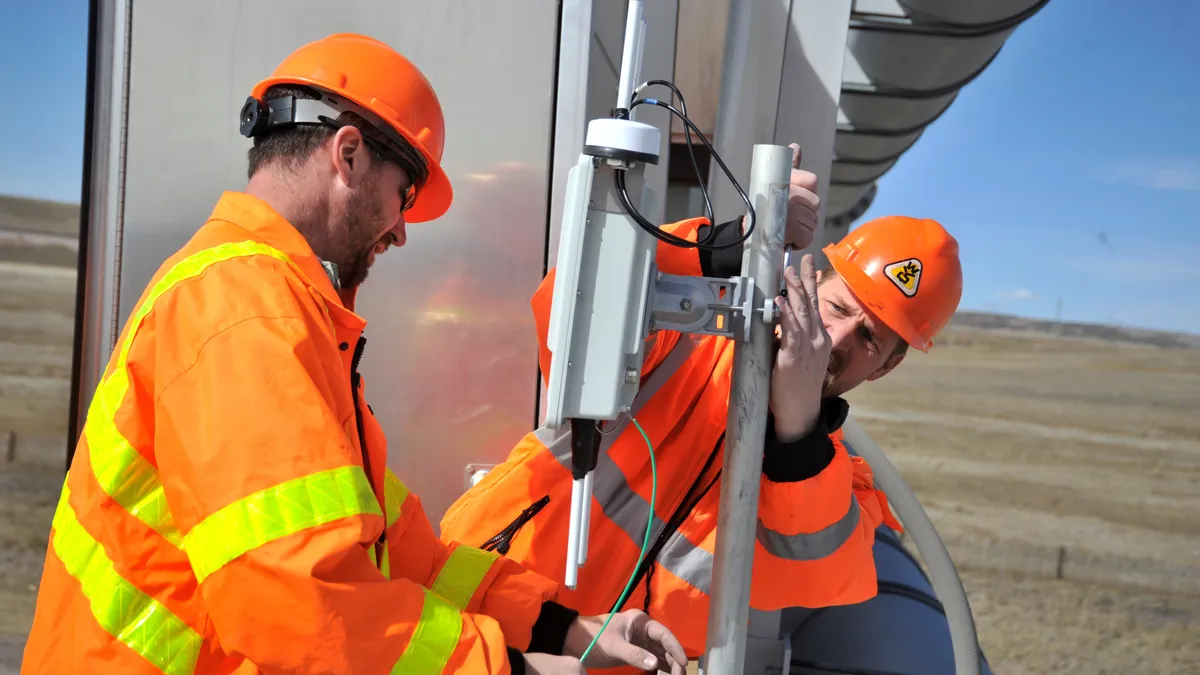Every year the American Society of Civil Engineers (ASCE) honors infrastructure projects around the country that showcase innovative ways of constructing roads, building bridges and treating water.
Whether they’re unique, niche innovations or ways to cope with an ever-changing landscape of funding and regulations, the ASCE Infrastructure Gamechangers can provide contractors across the country with a roadmap for creative problem-solving.
ASCE recently added 12 gamechangers to its list of honorees. Here is a look at some that have the biggest ramifications for the construction industry.
EJ Water Cooperative and Illinois Fiber Connect
The project: Rural communities have less accessibility to both broadband services and clean drinking water than suburban and urban areas. To respond to that issue, two Illinois co-ops, EJ Water Cooperative and Wabash Communications, teamed to create Illinois Fiber Connect in St. Dieterich, Illinois, developing a unique solution: running fiber along water pipelines within the same trench. This reduces costs for installation, and syncing the utilities allows for smart meters to capture live data.
Why it’s innovative: The project provides internet and water to areas in need while simultaneously saving money.
Mississippi levee inspection system
The project: Dating from the early 1900s, the Mississippi levee system is considered one of the most extensive engineering infrastructure projects in the world, comprising more than 5,600 kilometers of earthen wall structure designed to protect the agricultural area of Mississippi Valley. Subsurface water events cause damage on levee structures that are not easily spotted prior to the appearance of slough slides or through-seepage. The traditional method used for detecting these events involves time-consuming and expensive physical surveys.
Mississippi State University researchers developed a system that uses a NASA-designed radar system to detect variations in the properties of soil along the river. The instruments can penetrate soil layers to find indications of future levee failure in a flood.
Why it’s innovative: The technology allows the discovery of areas in need of repair before the situation worsens or causes damage, and could help save money and prevent disasters on similar infrastructure projects, according to ASCE.
Lava-protecting panels on Hawaii highways
The project: Highway 130, a busy road on the eastern side of the island of Hawai’i, was damaged from intense heat following an eruption of the Kilauea Volcano in May 2018. When volcanic activity calmed, the Hawaii Department of Transportation installed $1 million heat-resistant Calcium Aluminate Cement roadway panels.
Why it’s innovative: The panels will help keep the temperature of the roadways much cooler — around 130 degrees, down from as high as 275 degrees, according to ASCE and Hawaii DOT.
Wyoming connected vehicle program
The project: I-80, running along the southern border of Wyoming, is one of the locations for the U.S. Department of Transportation’s connected vehicle technology pilot program. The tech is installed on roadside units as well as in 400 vehicles that drive I-80, and can communicate dangerous road conditions, such as crashes or bad weather, to drivers.
Why it’s innovative: The system uses technology to help cut down on highway accidents in a part of the state that’s known for dangerous driving conditions.
Louisville sewer overflow basin project
The project: Louisville’s Combined Sewer Overflow was not meeting the Clean Water Act’s standards, as sewage would discharge in local inland waterways following some rainstorms. In response, the Louisville/Jefferson County Metropolitan Sewer District invested $78 million in the Southwestern Parkway Combined Sewer Overflow Basin project.
This progressive design-build project consisted of a 20-million-gallon concrete storage tank and associated wash down systems, odor control provision and an effluent pump station. To preserve the surrounding parkland the basin was constructed below the surface of the Great Lawn in Louisville’s Shawnee Park with a walkout operational access point concealed by park topography.
Why it’s innovative: In addition to its progressive delivery method and forward-thinking site design, the system incorporates “capture and release” technology that catches sewer overflow, then gradually releases it into treatment facilities when capacity becomes available.
Tilikum Crossing pedestrian and transit bridge
The project: Spanning more than 1,700 feet across the Willamette River in Portland, Oregon, Tilikum Crossing is the longest car-free bridge in the U.S. Opened in September 2015, the bridge is a four-pier, cable-stayed structure, with two piers on land and two in the water. A 14-foot-wide lane for bikes and pedestrians runs alongside tracks for the MAX Orange Line trains, buses and streetcars, and the roadway has a speed limit of 25 mph.
Why it’s innovative: Projects like the large pedestrian bridge can improve a city’s connectivity, while also attracting businesses, according to ASCE.
Branson, Colorado, water filtration
The project: A town with only 55 residents, Branson, Colorado, found it challenging to reach new state water safety regulations with its small infrastructure budget. Town leaders got creative and built a website to appeal for contributions from current and former residents. Through this crowdsourcing effort and a $67,500 grant from the Colorado Department of Local Affairs, the city was able to purchase a purification system from local company Innovative Water Technologies. The unit uses wind and solar power to purify water, which means it will also likely meet the state’s goal of reaching 100% renewable energy by 2040, according to ASCE.
Why it’s innovative: Branson’s method of crowdfunding could set the stage for other jurisdictions that need extra money to finance infrastructure projects.
PennDOT demand-response transit
The project: The Pennsylvania Department of Transportation (PennDOT) provides transportation for disadvantaged groups, but found the hourly public transportation schedules less helpful than basing transportation aid on demand. PennDOT invested $24 million on consultants and organizers to find the best way to increase efficient trips and a demand-response transit model, with dispatch software for public transport.
Why it’s innovative: PennDOT maximized the number of efficient trips each hour, improved the performance of systems, decreased the consumer cost of trips and saved $600,000 in maintenance costs in the first year, the organization said.














